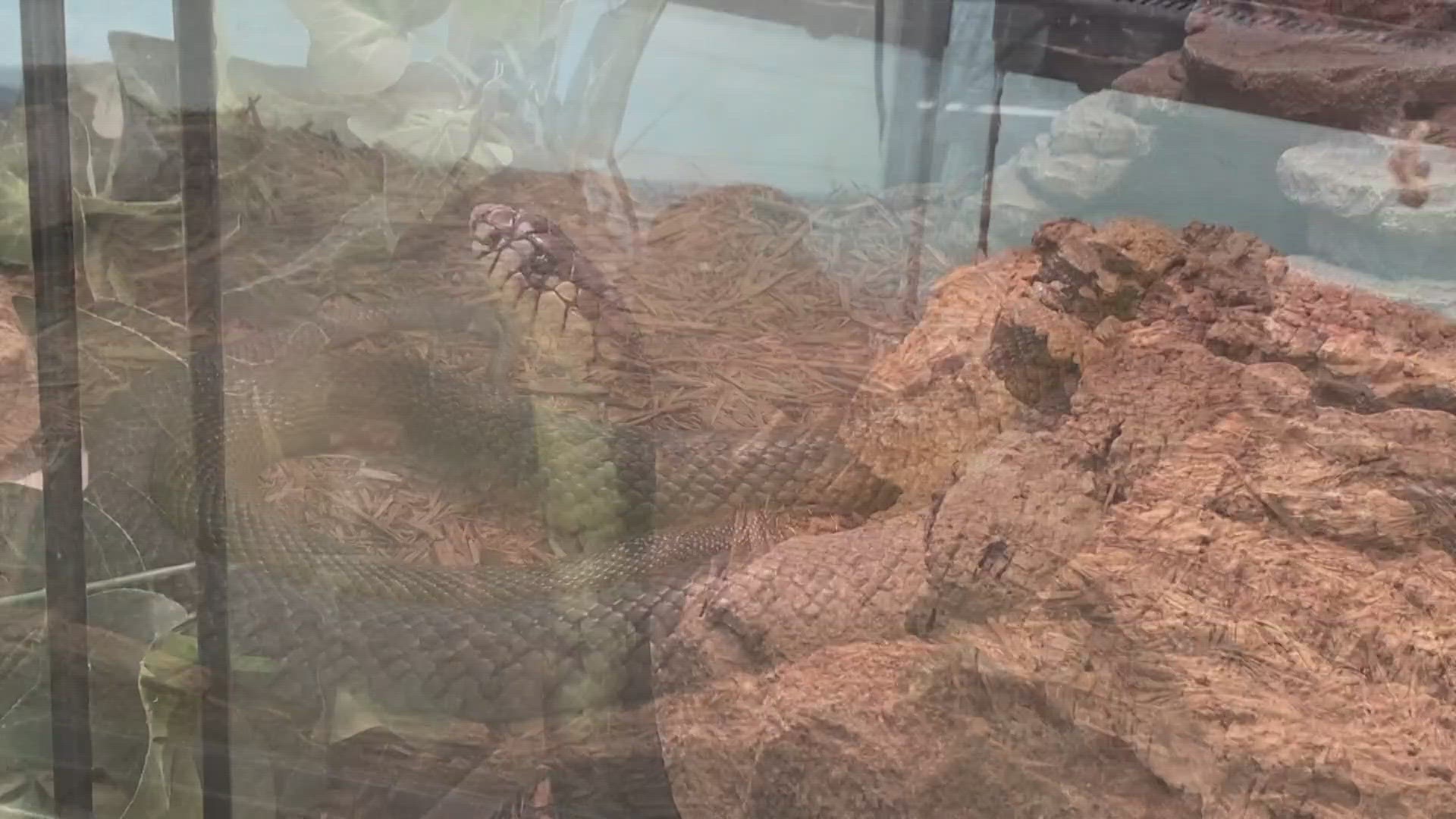The venom snake room at the Phoenix Herpetological Sanctuary is any snake lover's dream. More than 200 venomous snakes can be found there, including the world's most venomous snake: the Inland Taipan.
"Our main goal is education, we just love helping people," said Cale Morris, the sanctuary's venom manager.
Morris loves everything about snakes. He said he caught his first one when he was 5 years old and has wanted to understand these slithery serpents since.
"One of my favorite things about rattlesnakes is there are so many misconceptions about them," he said. "Rattlesnakes don't chase you, a lot of people think this and there are stories but they're just not true. Rattlesnakes are actually completely the opposite; they are scared of us."
And people can see it for themselves. A variety of classes are held at the Phoenix Herpetological Sanctuary, including "Venomous Snake Training." The class is growing in popularity and allows people to fully understand these venomous reptiles and learn how to safely re-locate a snake if necessary.
"We've spent a lot of time educating people about these things," Morris said. "And we noticed the more education they have; their fear level goes down. People will come in scared, and I can visibly see them shaking and they say 'This is scary for me but I want to learn.' We spend a portion of the time in the classroom where we go over myths."
The class has been held for 20 years and counting and has opened the eyes of countless people to the world of snakes.
"It's hard for me to see people get bit and I think it's avoidable," he said. "So, for me, even though I love snakes, it's about the people. I just feel like I can make a difference, we can make a difference and we can help people. I've been here 19 years and have never been bitten and I always tell people it's because I follow the rules. It's very easy to stay safe around rattlesnakes."
The real test comes when Morris brings out a real rattlesnake and teaches people to safely and appropriately put the snake in a bucket using tongs. And yes, if you'd like to try your hand at it, you can.
"They wont attack us," he said. "Education is the answer. We can live safely around snakes."
Morris would know. He has been doing research on these reptiles for the past 15 years. This year though he began new research.
"We put little radio tracking devices inside the snakes," he said. "I'm mostly recording their movements. When we move them from someone's house, what are they doing? A lot of them think it's the same snake coming back and I don't think so. So, the data is going to be interesting."
Morris wants the study to last about 10 years. He said the more data that can be collected the better because that way there's a better understanding of how to live safely around them. For him, it's all about keeping people safe.
"We have a beautiful desert and it's rich with life and we want to live here and rattlesnakes come with that," he said. "We need them. They're part of our ecosystem because if not we'd be overrun with packrats. Snakes have their role and I believe we can live safely together."
There is a fee for the class and reservations are necessary. They can be made here.

